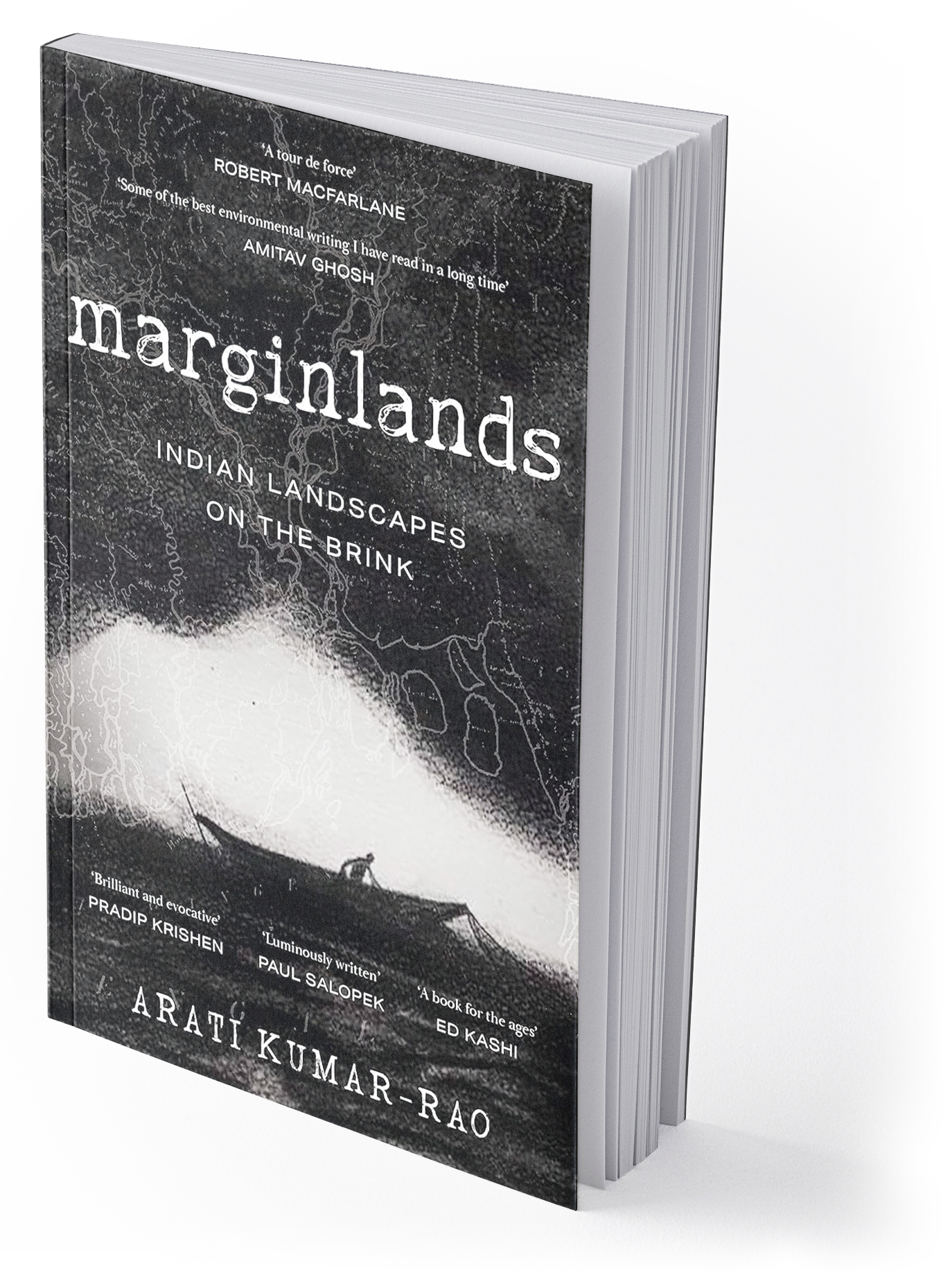Recounting Landscapes and Reading Nature
Marginlands – Indian Landscapes on the Brink
Arati Kumar-Rao, Picador India: New Delhi, 2023. 254 pages. $26.00

The most memorable illustration in this beautiful book is that of a small fishing boat with a single oarsman paddling on what is most likely Dal Lake in Kashmir. The boat’s angle is drawn by its shadow on the trembling surface of the water. This little boat recurs throughout the book as a separator of sub-sections that divide the chapters. Though it may seem an unimportant detail, this subtle motif reflects the slow, contemplative storytelling style at the heart of this long, award-winning work.
The book is structured in five parts, each introduced by a magical opening illustration spread, also by the author, that sets the scene for what you are about to read. You turn the page and step into a world of different landscapes, discovering along the way the destruction and alterations being wrought by relentless human activity.
Arati Kumar-Rao takes you on a veritable ‘tour de force’ (as the famous environmental writer Robert Macfarlane said) across and around India: from the Thar Desert in the north-west to the Sundarbans in the north-east, along the Ganges and the Himalayas, to the glaciers in Ladakh, to the shifting sands of Kerala in the south-west.
And everywhere you go, you witness the ravages of man-made disasters on the land. There is the damming of the Ganga River and other tributaries leading to the depletion of Irrawaddy river dolphins; there are the devastating effects of agricultural policies causing more intense desertification; there are the wild dogs that proliferated around military bases feeding off waste, destroying the natural balance, and threatening the survival of the grey wolf; and there are the breakwaters inhibiting the sands from moving up the coast with the currents which is causing further erosion, to the detriment of local fishing villages on the southern tip of India.
These are some of the most glaring examples created by what could be called the Department of Devastation of the Ministry of Human Encroachment on Nature. And there are many more examples, each told with tranquility and interspersed with traditional myths and stories from locals that give depth and wholeness to each journey.
Kumar-Rao’s approach involves patient observation: she stays in each location long enough to experience and transmit what is really happening. She is exploring the usage of words and employing a language that connects the reader to nature. Robert Macfarlane describes this as “a language that recognizes and advances the animacy of the world” (Underland, p.112).
Take, for example, her description of the monsoon coming in off the coast of Thiruvananthapuram:
The sea has turned from emerald to a mossy green now, incessant waves crashing against the beach, dissolving each time into a sulphuric ochre froth. The horizon, out to the southwest, has deepened to charcoal. (p.139)
Then we travel to the sacred Devakota mountain of Nepal, “deep within the heart of the Buddhist belief system” where:
Rocks are swaddled in moss mats an inch thick and dripping with moisture. I cup my hands beneath one and drink the water that drips into my palms. It is sweet and cold and life-giving. (p.197)
This is followed by perhaps one of the best nature-writing lines of the book, full of animacy:
Loopy, twisted, woody vines – lianas – shrouded in lichen and ferns, fungi and orchids festoon the understory of the forest. (p.198)
Arati Kumar-Rao has the rare talent of mixing artistic mediums to tell her stories – there is even a photo essay in the middle of the book (unfortunately in black and white). But it is bizarre that she describes the Sundarbans as meaning ‘beautiful forest’ (p.58) etymologically, when the compound word comes from ‘sundari’ (the most popular mangrove species in the Sundarbans) and ‘ban’ (forest), giving ‘the Sundari mangrove forest’. However, this confusion is a very minor blooper in what is overall a masterpiece of environmental writing.
